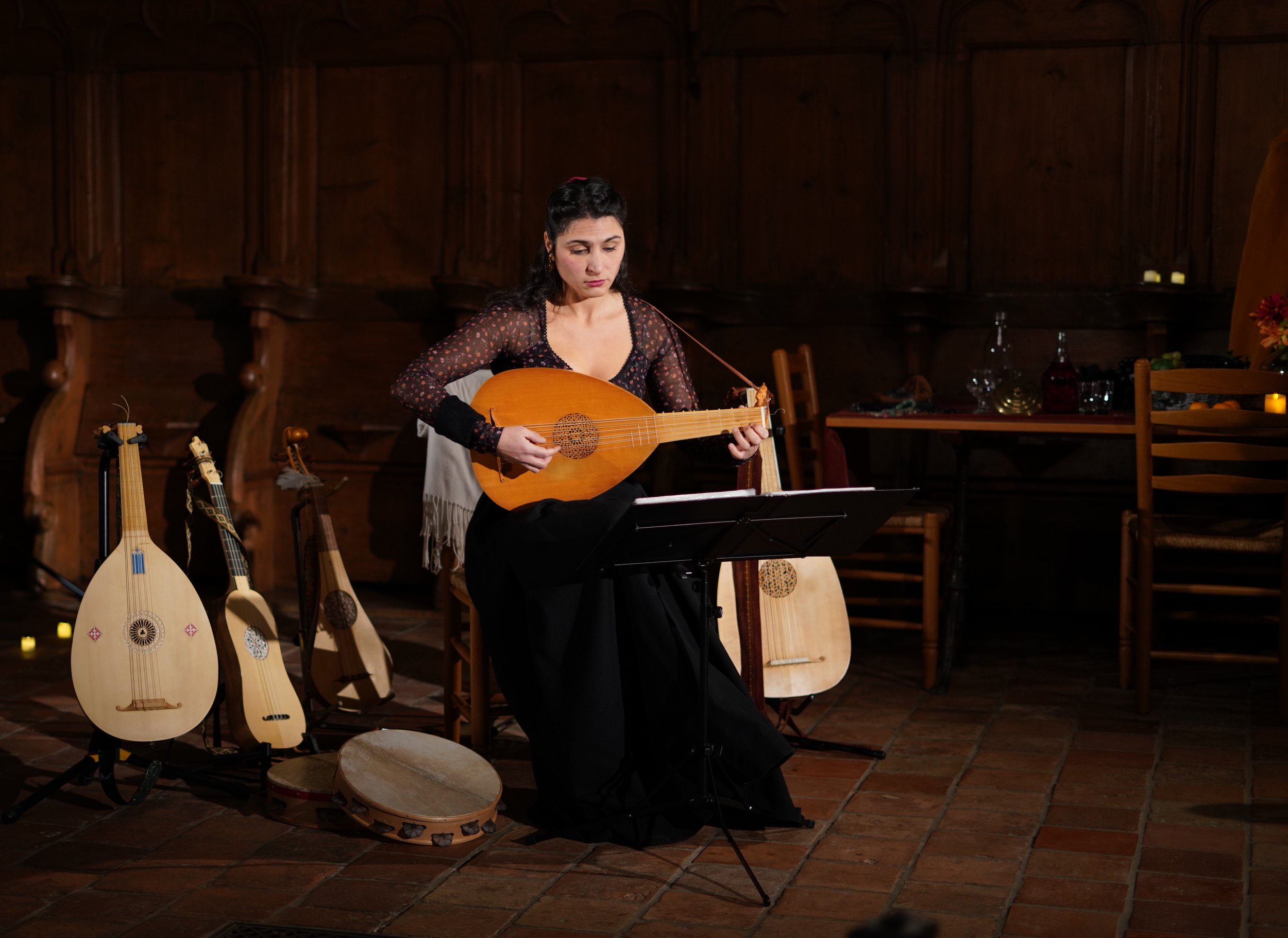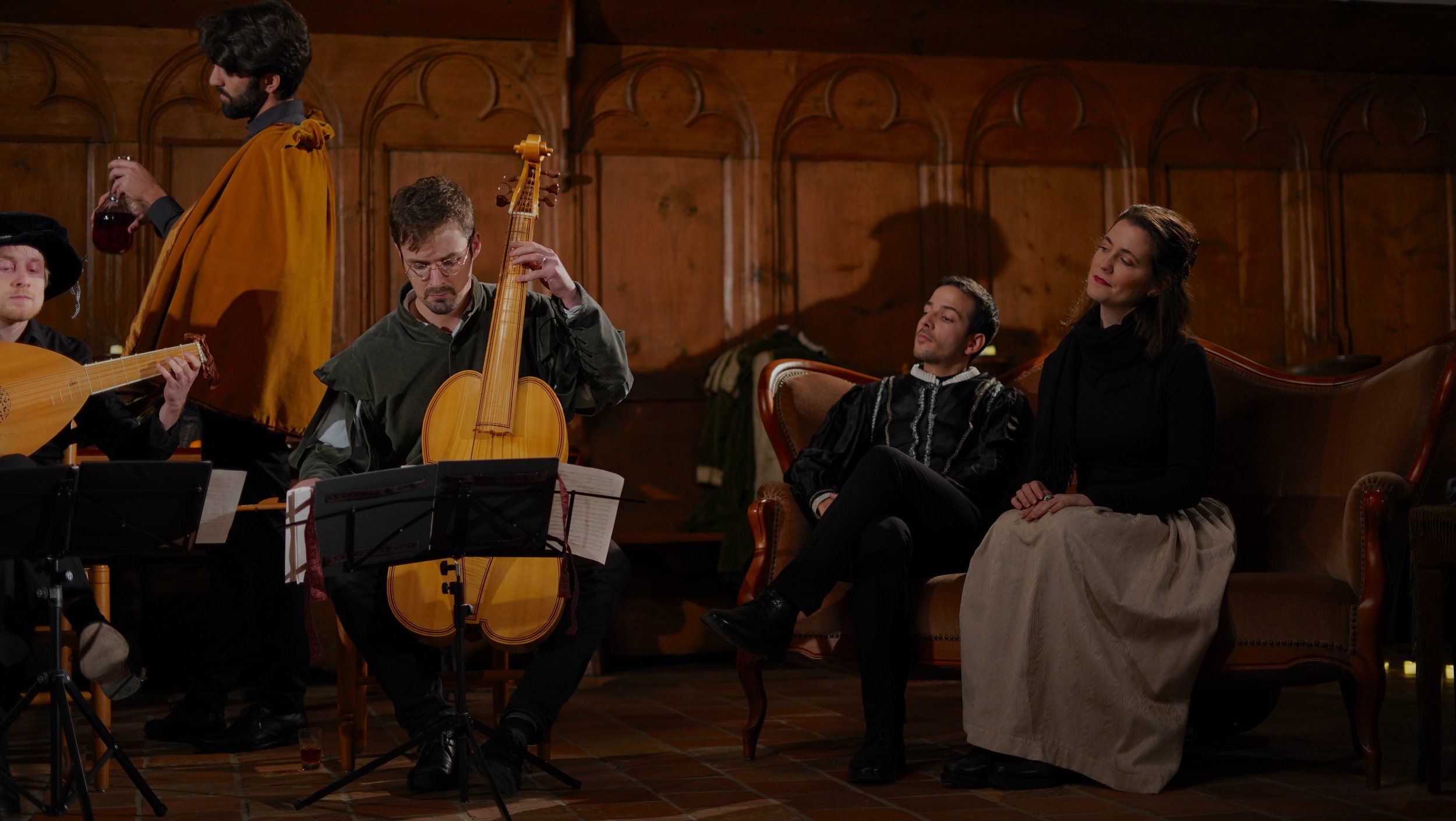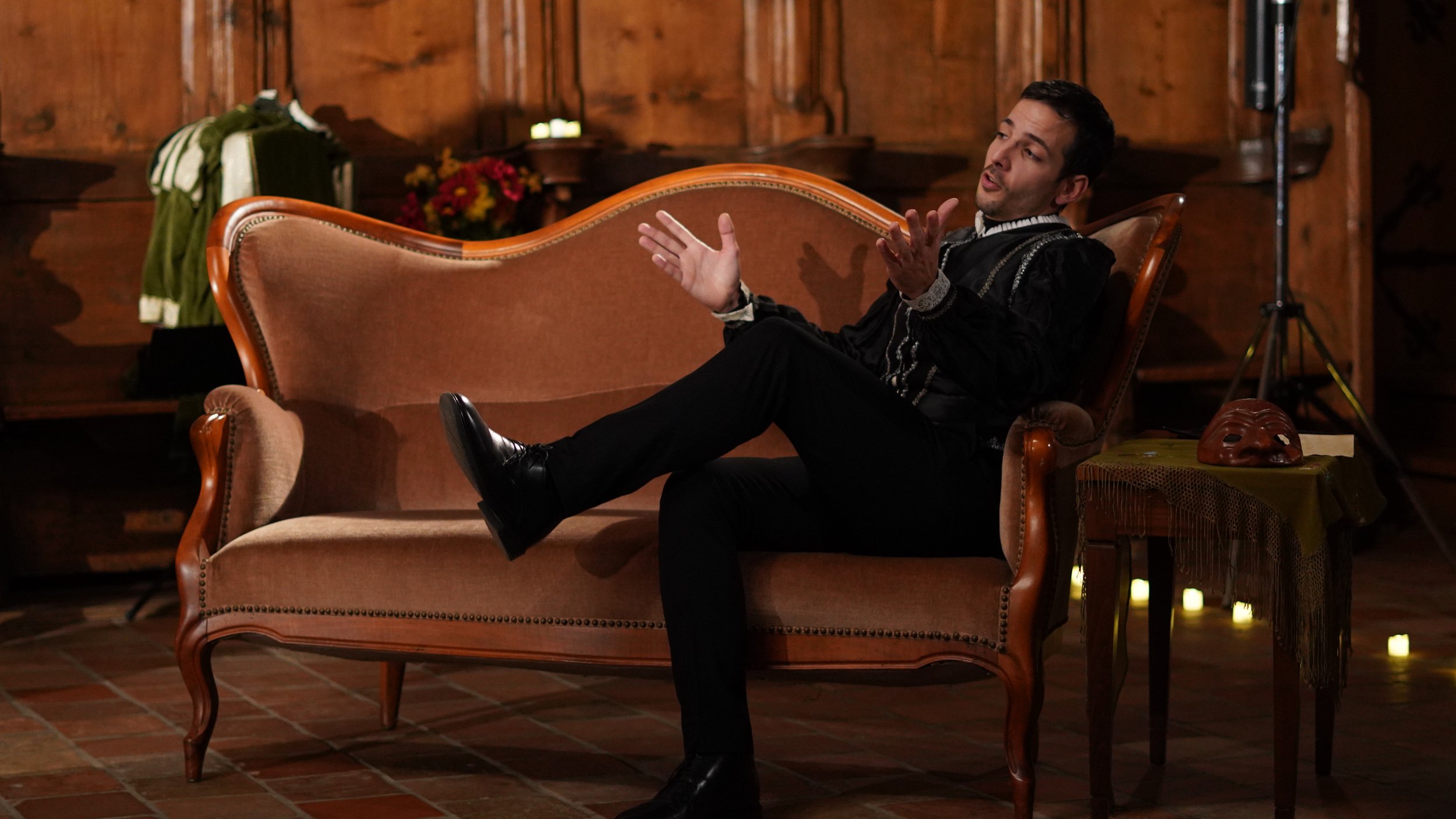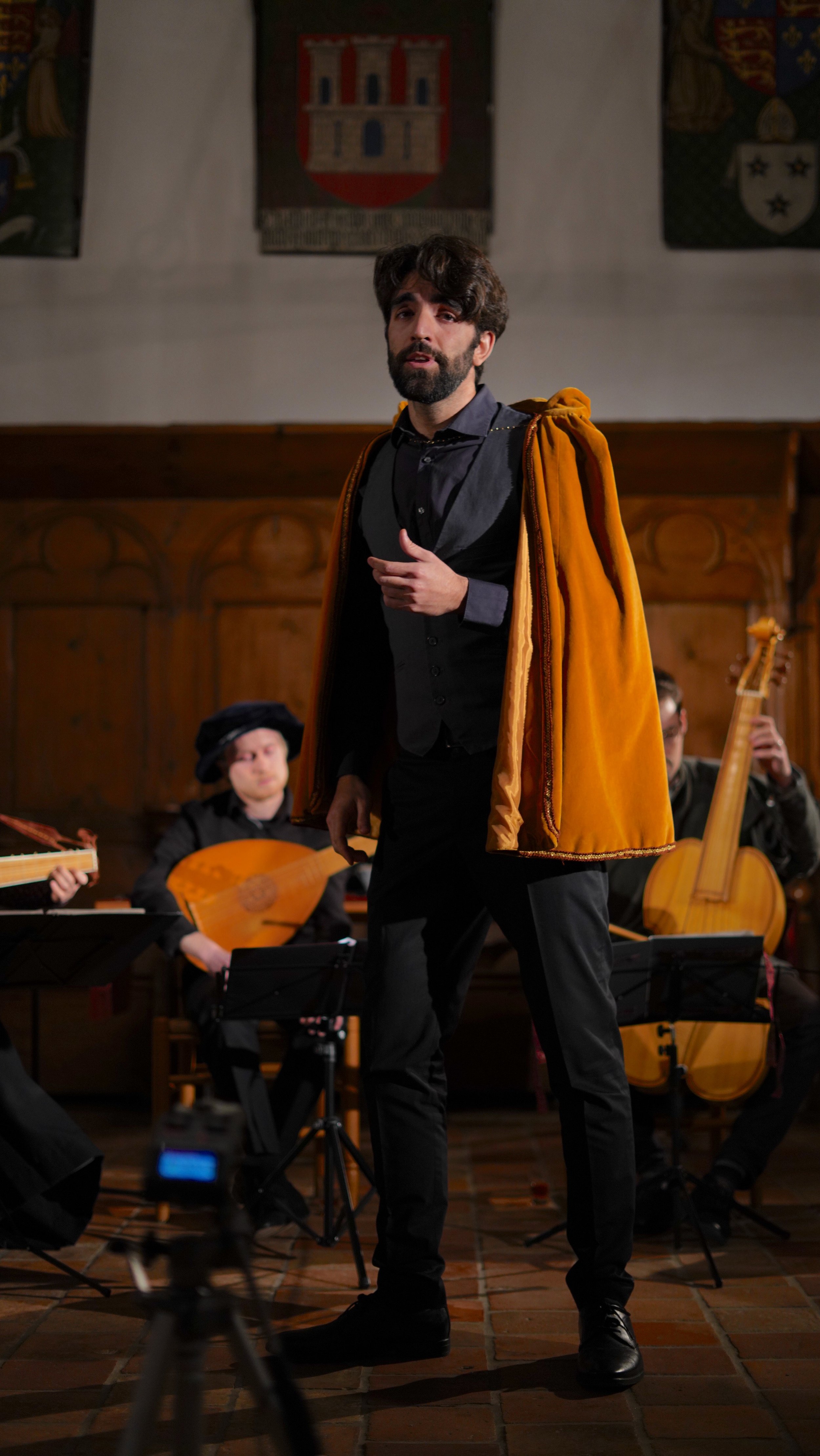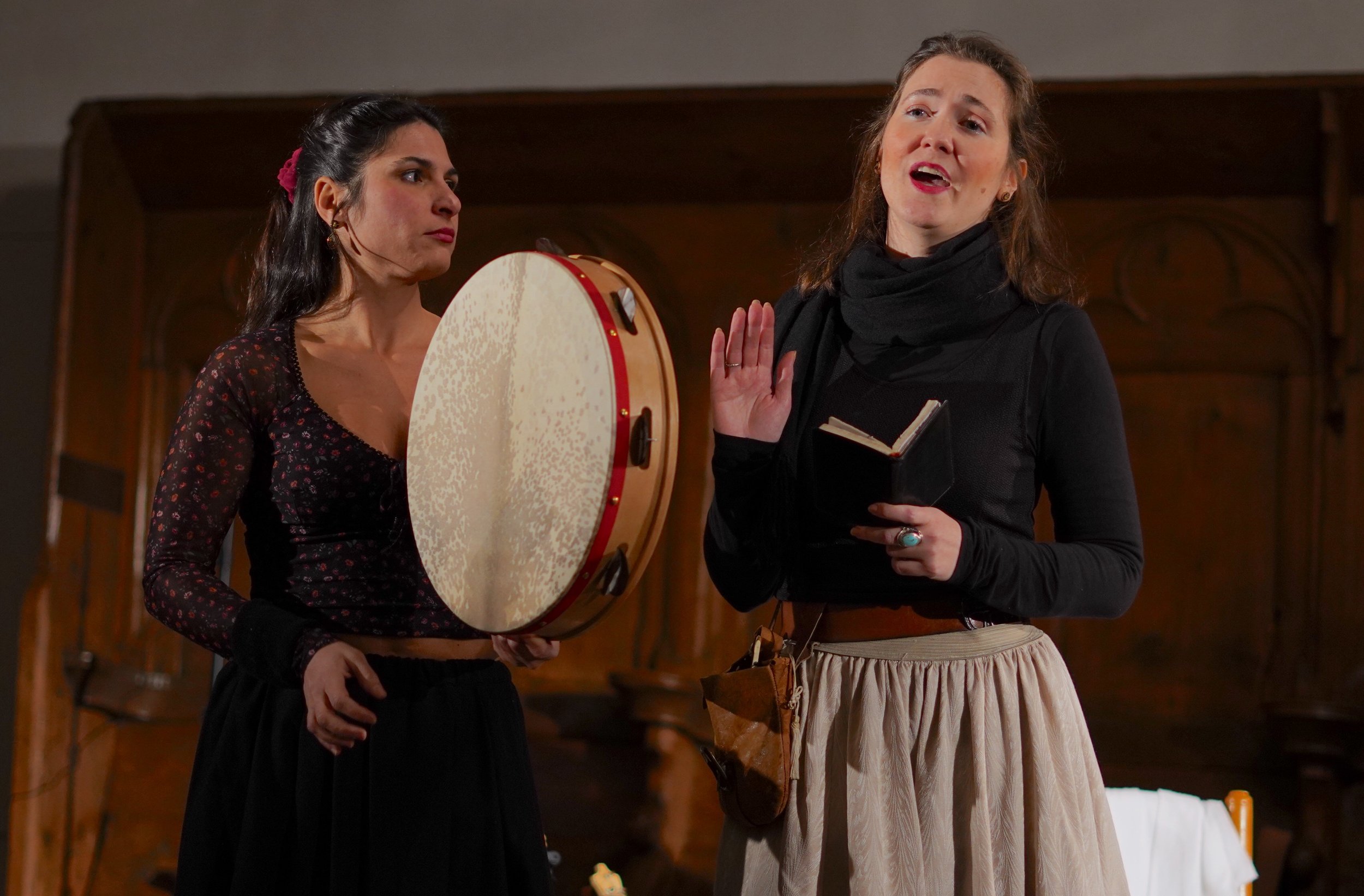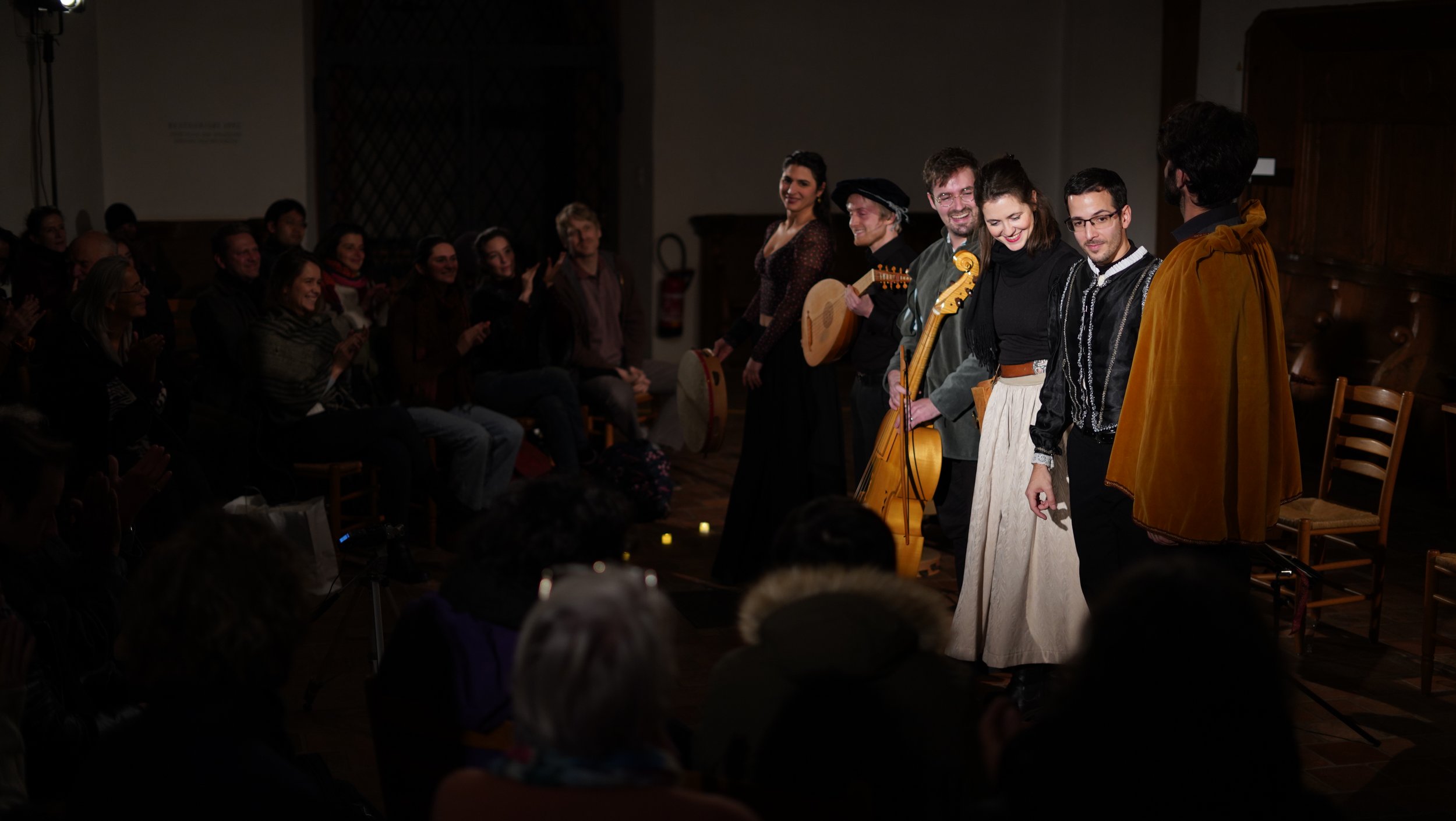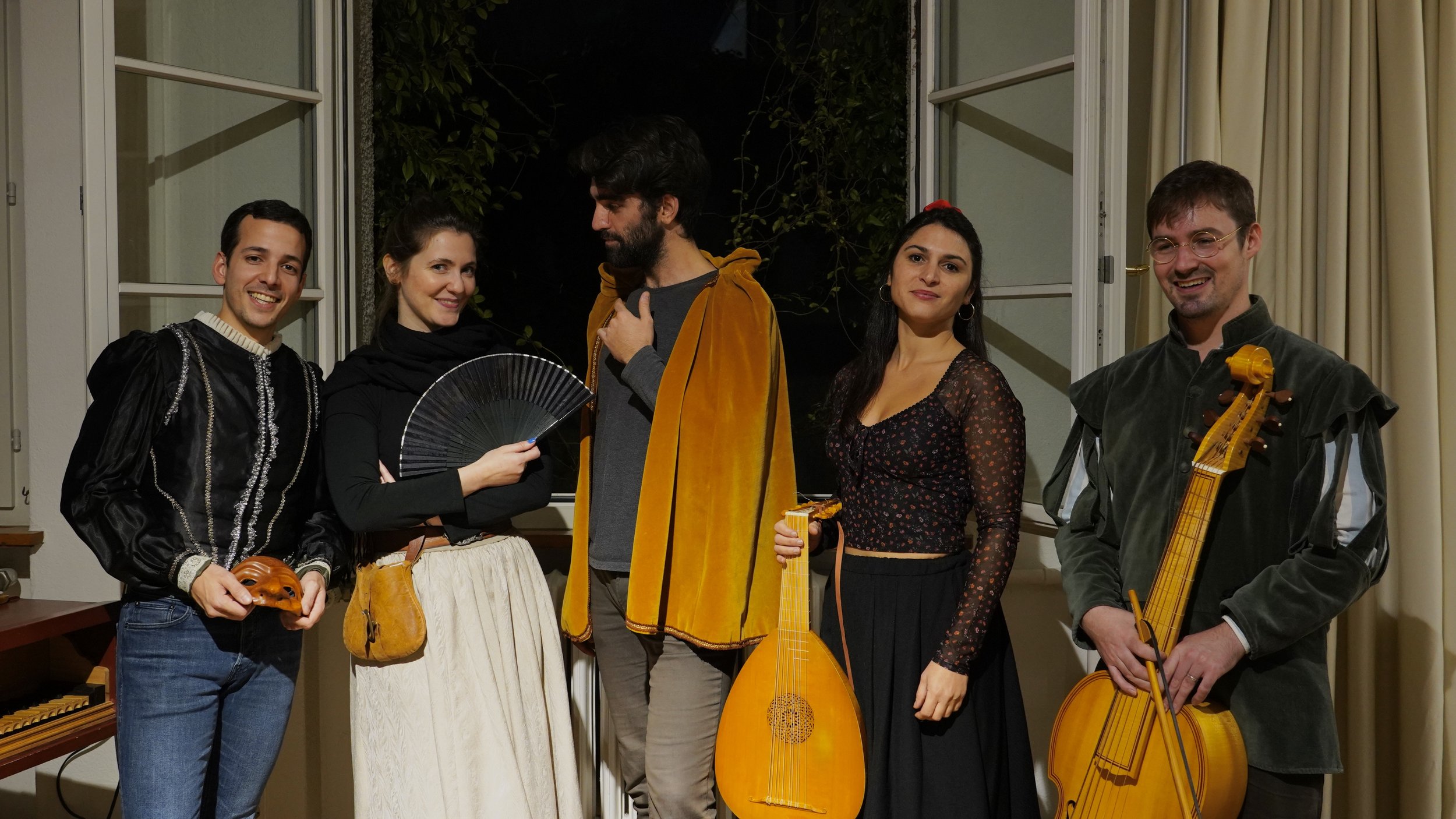
LA ESTAMEÑA

LEONOR, courtesan – Ailén Monti Valdés
ROMERICO, king's Chamberlain – Elias Ongay
JUAN, king's Chamberlain – Alberto Palacios
ANTONILLA, courtesan – Jaia Niborski
FÉLIX, musician – Silas Bischoff
NICOLAS, musician – Stephen Moran
Directed by Ailén Monti Valdés, the performance involves six musicians who play characters and have dialogues in between the songs. The musical pieces are arranged in a theater scene that reenacts the stage practice of the beginning of the 16th century. The project is focused on two Spanish songbooks of the early 16th century: the Cancionero de Palacio and the Codex Segovia. These manuscripts contain music from Spain, Flanders, and Italy, courts that had a close relationship and exchange of repertoires and musicians. The program is complemented by music from other Italian sources such as the Cancionero de Montecassino, Paris 676, the Thibault lute manuscript, and prints by Petrucci. In addition, new music for introductions and transitions as well as arrangements were written by Ailén following models of the time.
Ensemble La Enstameña:
Jaia Niborski, Alberto Palacios, Elias Ongay – Voice; Silas Bischoff – Lute; Stephen Moran – Viola da gamba
Ailén Monti Valdés – Lutes, Renaissance Guitar, Voice, Tamburello; Script and Direction
DOWNLOAD DOSSIER

«ERASMUS KLINGT – Festival Lab»
Stiftung Wildt'sches Haus. Peterspl. 13, 4051 Basel CH
La media noche es pasada - A musical play
https://www.erasmus-klingt.ch/home/detailpage?detail=430&cHash=06be493667c4fa0ec008647e901f8a3f

SCHLOSSFEST AMBRAS 2024
Schlossstraße 20, 6020 Innsbruck Austria
La medianoche es pasada – Ein musikalisches Schauspiel
https://www.altemusik.at/de/veranstaltungen/schlossfest-ambras-2024?date=2024-08-15

Master recital
MASTERREZITAL Fokus Renaissance (Laute und Gitarre) Klassen Julian Behr / Marc Lewon
La medianoche es pasada – Ein musikalisches Schauspiel
Unter freundlicher Mitwirkung von:
Jaia Niborski, Alberto Palacios Guardia, Elias Ongay (Gesang); Silas Bischoff (Laute); Stephen Moran (Viola da gamba)
Directed by Ailén Monti Valdés, the project is focused on two Spanish songbooks of the early 16th century: the Cancionero de Palacio and the Codex Segovia. These manuscripts contain music from Spain, Flanders, and Italy, courts that had a close relationship and exchange of repertoires and musicians. The program is complemented by music from other Italian sources such as the Cancionero de Montecassino, Paris 676, the Thibault lute manuscript, and prints by Petrucci. In addition, new music for introductions, transitions and arrangements was written by Ailén following models of the time. The performance involves six musicians who play characters and have dialogues in between the songs. The musical pieces are arranged in a theater scene that tries to reenact the stage practice of the beginning of the 16th century, instead of reproducing an ideal concert practice typical of the 19th century, where songs are performed one after another.
